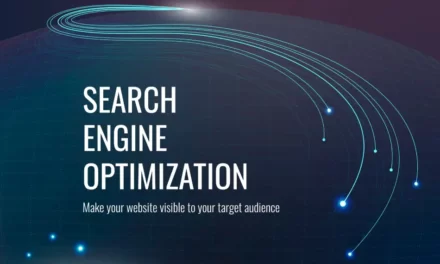On-page SEO is the most important aspect of search engine optimization. To rank well in Google or other search engines, you must have a perfect on-page SEO strategy. Doing an effective On-page SEO will help to generate more traffic for your website and make it easier to be found by potential customers who are looking for exactly what you offer.
In this article, I’ll explain how to do an excellent On-page SEO without focusing too much on link building or off-page SEO tactics.
On-page SEO is a critical part of your website, and you need to work on it. Nowadays most people prefer reading articles from blogs than any other site. This is because they get all the information related to their queries in an easy format.
People want quick solutions for every problem so blogging becomes a more effective way to get traffic to your website.
Therefore post should be well written, grammatically correct, and free of errors. Sentences are required to make sense when read in the context.
Spelling mistakes can lower down your site’s ranking if people find them regularly on your website for different pages/posts. Make sure you double-check everything before posting it.
Some of the major segments of On-Page SEO
Title Tags
These describe the page itself. It’s important that they contain keywords but also mention your brand name to boost visibility in Google searches.
The title should have between 50-70 characters without being too long or short, and it should include both a description of the page content as well as any targeted keyword phrases.
When writing titles, remember to use words people would actually search for when looking for something similar to what you provide!
Headers
Use headers throughout your post to break up different sections of text by topic, helping users find information more easily while reading on their mobile device or computer screen.
You can format headers by using different text styles, sizes, and colors.
H-tags
These are also important for helping search engine bots index your page more easily. They’re tags that surround keywords or phrases with h* markup.
This tells Google what is most relevant on a specific web page so it will be able to understand how you want your content sorted out accordingly.
For this reason alone, making sure they have accurate meta titles & descriptions as well as strong keyword optimization within these tags is very important!
Meta Descriptions
These are the short sentences that appear under your page URL in search results.
They should be around 160 characters long and contain a few of your most important keywords as well as reflect what users will see on the actual web page content itself.
You can change them anytime, but it’s recommended to do so when you first launch a new site or blog post.
ALT Tags
Use these for images since they help tell Google & other search engines what each image is about!
They also describe how relevant a specific piece of media is to any given topic by using words people would actually use when searching for something similar.
Keyword Research
This step involves using tools like Google’s Keyword Planner to research what people are actually looking for online. There you can enter in any keywords related to your industry and find out the number of monthly searches, plus how competitive that search phrase will be once it goes live on Search Engine Results Pages (SERPs).
To do this correctly, just go into the planner & type in a few potential SEO terms or phrases that describe your post content directly. Then click “Get Ideas” under the keyword section before clicking the “Approved Products & Services” tab at the top of your screen.
Keywords
These are essential, especially if you want your website to rank higher with Google searches for specific phrases people input into their browser search bar before clicking any results page links.
Here are some tips for using keywords effectively within blog post content or web pages themselves- use them naturally throughout the text so it doesn’t seem spammy.
Stick to using one or two per page, don’t stuff them into H-tags & meta descriptions, do not be afraid to use variations of the same keyword if it makes sense within certain phrases.
Content Body
The information which you feed in the blog are the soul which is going to keep the visitor attracted to the website.
Therefore one should never forget to write the content using the best of words, and information, if they are serious about ranking their articles for competitive keywords.
Keyword Placement
Within your post content, you should aim to include keywords in titles as well as throughout other important areas like headers and subheaders.
This helps Google determine what people will search for on their platform so they can direct searchers towards relevant pages quickly! The more specific a word or phrase is (i.e., “paleo breakfast recipes that only take five minutes to make” instead of just “breakfast ideas”), the better because it will be easier to rank higher in Google’s SERPs.
Although it is better to stick with one or two keywords per piece of content, you can definitely use variations under different headers if needed!
Internal Linking
Not everyone knows about this but internal linking is a great way to make visitors surf through the website before closing the page.
Google most likely ranks those blogs which are having a great internal linking structure. Not all the information can be shared in one post, therefore, try to create multiple posts for similar kinds of topics.
Interlink them with each other so that page weight can also be managed and at the same time you can target multiple keywords at different blogposts.
Concluding On-page SEO Guide
It is very important for a website to rank high on Google SERPs if you are interested in creating sales and leads.
Website owners need to know about SEO strategies and how to leverage them in their favor.
Our blog is dedicated to all the SEO enthusiast who wants to learn and excel in the field of Search Engine Optimization.
If you want your articles to be found easily by visitors, then it is essential that the site ranks well in search engine results pages (SERPS).
In order for this to happen, every article should have all the on-page SEO aspects such as title and meta description which are relevant and keyword-rich.
Furthermore, there should be no duplicate content or outbound links from each page of your website as this will also affect how your site appears on SERPS.
The blog post has come to an end now so we hope you enjoyed reading about our thoughts!



